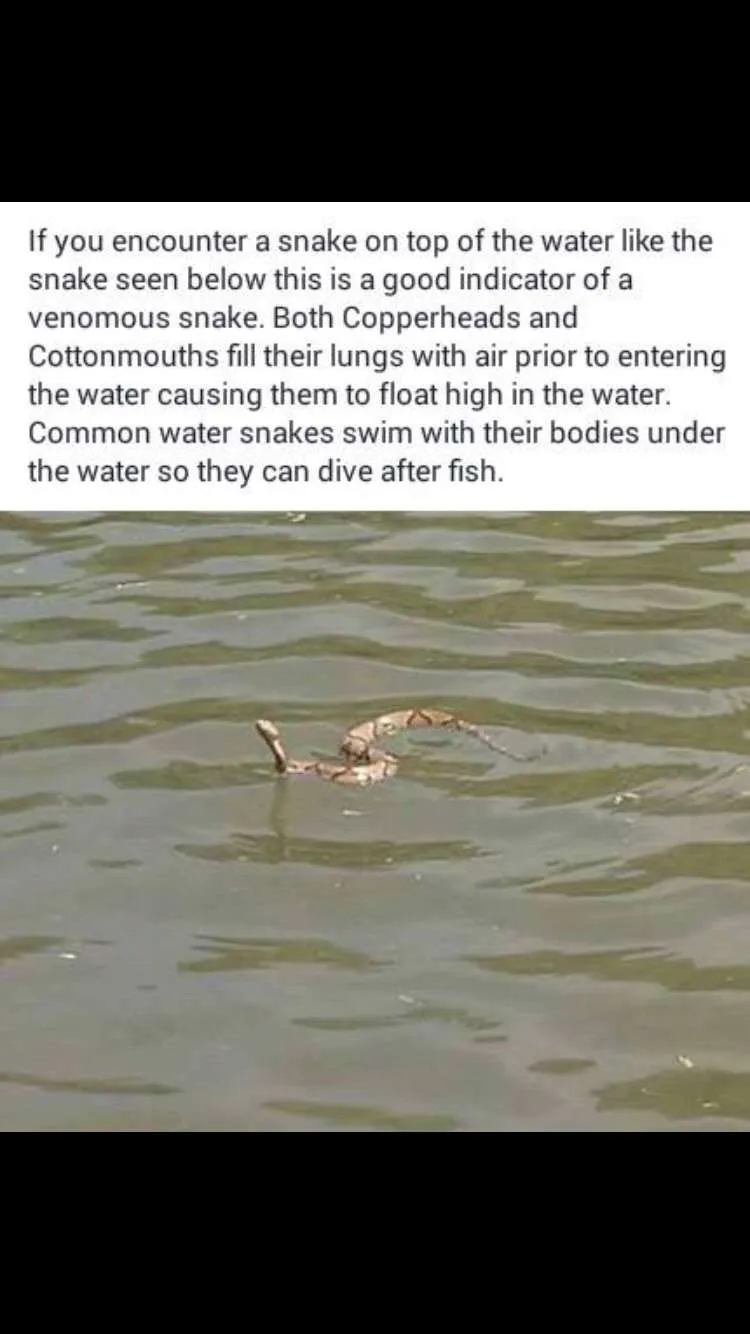With the weather warming up, and summer almost here, the lake is a common spot for families to spend their time. You’re swimming, and you notice a snake floating around near you. What is your reaction? Will you know if that snake is poisonous or not?
Snakes are important for our ecosystem, however, water snakes are known to be aggressive and will strike when approached. There are four types of venomous snakes to watch out for, only one of which lives in and around the water.
The Cottonmouth snake, also known as the water moccasin, swims on top of the water similar to other kinds of water snakes. Non-venomous water snakes will generally sink down below the surface of the water and float with only their head sticking out. On the other hand Cottonmouth snakes float on the surface of the water. This type of snake is normally found near a body of water.
Cottonmouths are often mistaken for Copperhead snakes. The cottonmouth has a white mouth and often opens their mouth wide to scare off predators. Copperhead snakes have a pink mouth, and are a chocolate milk color with darker brown stripes. Adult cottonmouths are typically dark brown, which can appear to be almost black. Younger cottonmouths can be more brownish in color with their own distinct markings. A young cottonmouth’s tail is yellow.
So how you tell the difference between a water snake that is not poisonous, and a poisonous cottonmouth? Most water snakes are slender, with a thin or flat head, they have round pupils and no pits on their face. You may also find a water snake on tree limbs by the water. Water snakes hibernate in the winter and are social during other parts of the year, and when threatened, they can bite, give off a musky smell, defecate or vomit.
Water snakes eat slow-moving fish, frogs, toads and salamanders. There are 10 different species of water snakes and they all look a bit different, however the venomous Cottonmouth has its own distinct look. They have a heavy, thick body with a distinct narrow neck, a blocky head and a dark-colored body. Cottonmouth ranges in color, and can be dark brown, olive-brown, olive-green or black and have with wide, dark bands, which make them more distinct than other types of water snakes. Cottonmouth’s can be anywhere from two to four feet in length. These snakes eat fish, small mammals, birds, lizards and even smaller cottonmouth’s. Like all predators, you will find them near their prey.
With these facts in mind you should feel better equipped to tell the difference. It is also a good idea to stay away from snakes if they aren’t harming you. If there is a snake in your house, or on your property and you need help removing it, contact your local wildlife and pest control. The poison control center advises that if someone is bitten by a snake that they stay calm, limit use of the bitten arm or leg, wash thoroughly with soap and water and call the poison control center at 888-222-1222.

